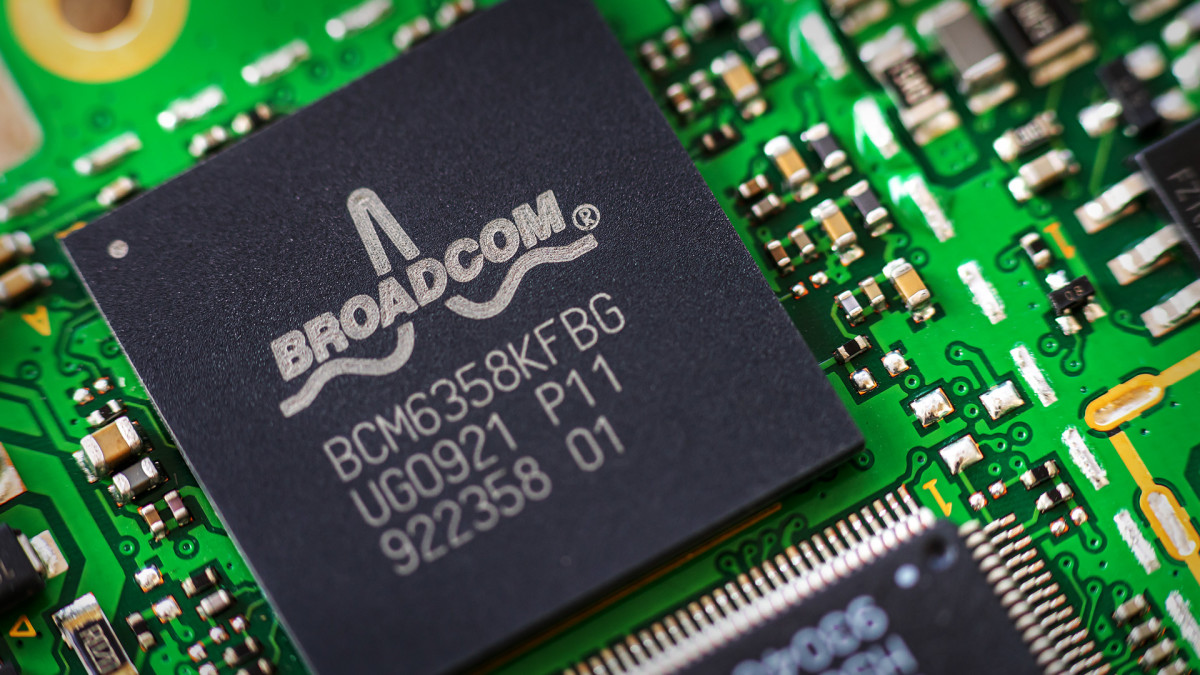Over the past six months, Broadcom’s stock has gained 104%. A significant boost to the stock was the Q3 earnings reveal that Broadcom secured $10 billion in orders of AI racks, based on the company’s XPUs (XPUs are custom AI accelerators) from OpenAI.
However, OpenAI has made numerous deals, and the agreements with Nvidia and Oracle alone are expected to cost the company $650 billion, as reported by The Wall Street Journal. If we include deals with Broadcom and AMD, we approach $1 trillion.
OpenAI’s annual recurring revenue is expected to surpass $20 billion this year; however, the company remains unprofitable.
It is highly unlikely that it will have the money to finance all of its deals, even if it gets a massive cash infusion. This is why any investor interested in Broadcom should be wary of this $10 billion deal.
That being said, the company’s strength is its networking stack.
Broadcom revealed on October 14 the Thor Ultra, an 800G AI Ethernet Network Interface Card (NIC). According to the company, the NIC is capable of interconnecting hundreds of thousands of XPUs to drive trillion-parameter AI workloads.
The company also unveiled Wi-Fi 8 silicon solutions for the broadband wireless edge ecosystem, including residential gateways, enterprise access points, and smart mobile clients.

Shutterstock
Broadcom Q3 revenue grows 22% to $15.95 billion year over year
On September 4, Broadcom (AVGO) reported its results for Q3 of fiscal 2025.
During the earnings call, Broadcom CEO Hock Tan said:
“The network is the computer, and our customers are facing challenges as they scale to clusters beyond 100,000 compute nodes. For instance, scale-up, which we all know about, is a difficult challenge when you’re trying to create substantial bandwidth to share memory across multiple GPUs or XPUs within a rack. Today’s AI rack scales up a mere 72 GPUs at 28.8 terabits per second bandwidth using a proprietary NVLink. On the other hand, earlier this year, we have launched Tomahawk 5 with Open Ethernet, which can scale up 512 compute nodes for customers using XPUs.”
Here are the Broadcom earnings highlights:
- Revenue of $15.95 billion for the third quarter, up 22% YoY
- Net income of $4.14 billion, compared to a net loss of $1.9 billion in Q3 2024
- Adjusted EBITDA of $10.7 billion for the third quarter, or 67% of revenue
- Diluted earnings per share of $0.85 for the third quarter
- Quarterly common stock dividend of $0.59 per share
The company provided an outlook for Q4 of fiscal year 2025:
- Revenue guidance of approximately $17.4 billion, an increase of 24% YoY
- Adjusted EBITDA guidance of 67% of projected revenue
Bank of America updates its semiconductor industry model
Bank of America analyst Vivek Arya and his team updated their global semiconductor industry model ahead of the Q3 earnings season.
They said they now estimate semiconductor industry sales of $745 billion, representing 18.7% year-over-year growth in 2025, and $971 billion, or 11.7% growth in 2027, which is 300 to 600 basis points higher than their prior projections.
Related: Analysts update Oracle stock forecast
Analysts expect the semiconductor industry’s total addressable market to reach nearly $1 trillion by 2027, up from their prior estimate of $860 billion, driven by the ongoing AI infrastructure build-out and the growing demand for AI compute and networking semiconductors.
They believe the current AI infrastructure build-out is more durable than prior large cycles and remain bullish on AI capital expenditures. Their top five semiconductor/AI stocks to buy are Nvidia, Broadcom, AMD, Lam Research Corp, and KLA Corporation.
More AI Stocks:
- More police agencies adopt AI, raising efficiency — and concern
- How AI Could Monitor Brain Health and Find Dementia Sooner
- ChatGPT latest user perk sparks controversy
- Bezos’s AI bubble warning backed by big names in banking
“Our new industry model highlights much faster growth in memory and data center/AI, modestly offset by slower recovery in consumer, PC, smartphone, and auto end markets. Notably, we now see data center-related components such as servers (silicon only) and wired infrastructure to grow +55%/+28% YoY, respectively, in [calendar year 2025], with YoY growth broadening out to all end markets in [calendar years 2026/2027] on broader cyclical recovery,” said the team.
Bank of America reiterates AVGO buy rating
Arya reiterated a buy rating and target price of $400, based on a 37 multiple of his estimate for the price-to-earnings ratio for the calendar year 2026. This is in the upper range of Broadcom’s historical range of 10 to 38 and justified, given double-digit earnings per share growth, profitability, free cash flow generation, and returns.
Analysts noted downside risk factors for Broadcom:
- Semiconductor cycle risks, including sensitivity to fundamental or sentiment shifts in AI theme
- High exposure to Apple and Google with potential design out risks
- Competitive risks in networking, smartphone, storage, and enterprise software markets, including rising Nvidia competition in networking
- Frequent acquirer of assets, which increases financial and integration risks
- Large $60 billion net debt
Related: Analysts revamp AMD stock price after key conference
#Analysts #update #Broadcom #stock #forecast